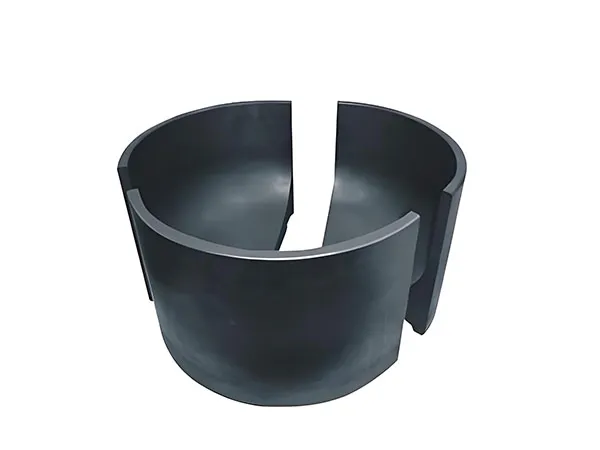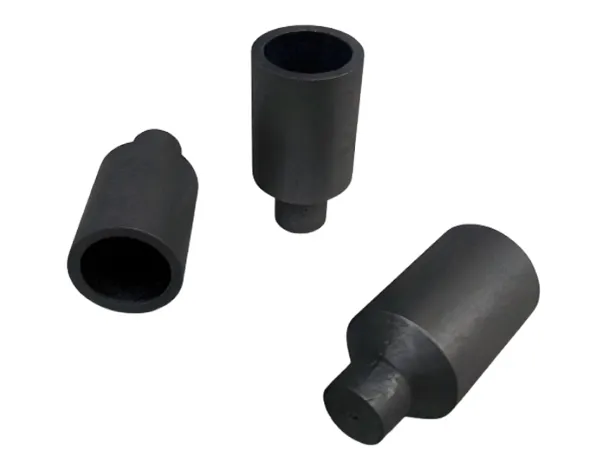Time: 2025-03-28 06:07:42 Source: Cangzhou Carbon Technology Co., Ltd.
Graphite crucibles are essential in high-temperature applications such as metal melting, alloy production, and laboratory experiments. Proper cleaning and maintenance of a graphite crucible after use are crucial to extending its lifespan, ensuring optimal performance, and preventing contamination in future operations.
Residual metal, slag, and oxidation byproducts can accumulate inside the crucible, leading to inefficiencies and potential damage. Cleaning a graphite crucible requires careful handling to avoid cracking or degrading its structure. In this guide, we will explore the best methods for cleaning a graphite crucible after use, recommended tools, and maintenance tips to enhance its durability.Cleaning a graphite crucible after use depends on what you were melting in it. Here's a breakdown of the best approaches, from easiest to most involved.

Cool Down Slowly: Let the crucible cool down slowly. Rapid temperature changes can cause thermal shock and cracking. Ideally, let it cool in the furnace.
Safety First: Wear safety glasses, gloves, and a respirator or dust mask, especially when handling residue or using abrasive methods. Some metals and their oxides can be hazardous.
Identify the Residue: Knowing what you melted is crucial. Some materials are easier to remove than others.

Tapping and Brushing (Best for minimal residue):
Purpose: This is your first and often only step if you've had a relatively clean melt.
Method: Once cooled, gently tap the crucible upside down over a suitable container (like a large metal bucket). Use a stiff-bristled brush (wire brush or a very hard plastic brush) to dislodge any remaining loose material. A dedicated crucible brush is recommended.
Best For: Fluxes that solidify as a loose residue, or small amounts of easily removable oxides.
Caution: Avoid striking the crucible too hard, as graphite can be brittle.
Vacuuming:
Purpose: To remove fine dust and loose particles that brushing might miss.
Method: Use a shop vacuum with a nozzle attachment to thoroughly vacuum the inside of the crucible. Ensure the vacuum is appropriate for the material you are collecting (e.g., HEPA filter for hazardous materials).
Best For: General cleanup after brushing, removing fine graphite dust.
Scraping:
Purpose: To remove solidified dross, slag, or metal buildup.
Method: Use a crucible scraper (a tool specifically designed for this purpose), a sturdy metal spatula, or a rounded metal rod to carefully scrape away adhered material. Work from the edges inwards.
Best For: Removing thick layers of slag or metal that have solidified inside the crucible.
Caution: Be very careful not to gouge or scratch the graphite, as this weakens the crucible. Work gently and patiently.
Heating (For removing some metals and fluxes):
Purpose: To re-melt residual material so it can be poured out or more easily scraped away.
Method: Place the crucible back in the furnace and heat it to just above the melting point of the remaining material. Carefully pour out the molten residue.
Best For: Removing metal that is still stuck to the inside of the crucible.
Caution: Only heat to the melting point of the residue. Overheating can damage the crucible. Use appropriate safety gear (gloves, face shield) when pouring molten material. This is a risky method and may cause damage to the crucible. Proceed with caution.
Sandblasting (Very Aggressive - Use Sparingly):
Purpose: To remove stubborn, tightly adhered residue.
Method: If the crucible is cool, use a sandblaster in a well-ventilated area. Use a medium to fine grit and low pressure to avoid damaging the graphite.
Best For: Extremely difficult-to-remove residue that cannot be removed by other methods.
Caution: Sandblasting removes a layer of graphite each time, significantly shortening the crucible's lifespan. Use only as a last resort.

Chemical Cleaning (Highly Specialized and Potentially Dangerous):
Purpose: To dissolve specific types of residue.
Method: This is generally NOT recommended for the average user due to the hazards involved. If you have a very specific residue that is resistant to all other methods, and you have the proper safety equipment and knowledge of chemistry, you might consider a chemical solution. For example, some acids can dissolve certain metal oxides.
Best For: Removing very specific, chemically reactive residues.
Caution: This is highly dangerous. Many chemicals can react violently with graphite or with the residue. Only attempt this if you have extensive knowledge of chemistry and proper safety equipment. Consult with a qualified chemist. This may also weaken the crucible.
Crucible Life: Every cleaning method, especially scraping and sandblasting, removes some of the graphite. The goal is to clean the crucible enough to be usable, without excessively shortening its lifespan.
Don't Over-Clean: A slightly discolored or stained crucible is perfectly acceptable. Focus on removing loose debris and buildup that could contaminate future melts.
Dedicated Crucibles: If you frequently melt different metals, it's a good idea to have separate crucibles for each metal to avoid cross-contamination.
Flux: Use appropriate fluxes for your melts. Fluxes help to collect impurities and prevent them from sticking to the crucible walls.
Storage: Store your crucibles in a dry place.
Disposal: Eventually, the crucible will become too thin or cracked to be safe. Dispose of it properly according to local regulations.
Start with the gentlest cleaning method (tapping and brushing) and only move on to more aggressive methods if necessary. Prioritize safety and be aware that each cleaning action will, to some degree, shorten the crucible's lifespan. Proper use of fluxes and careful melting practices will significantly reduce the need for aggressive cleaning.